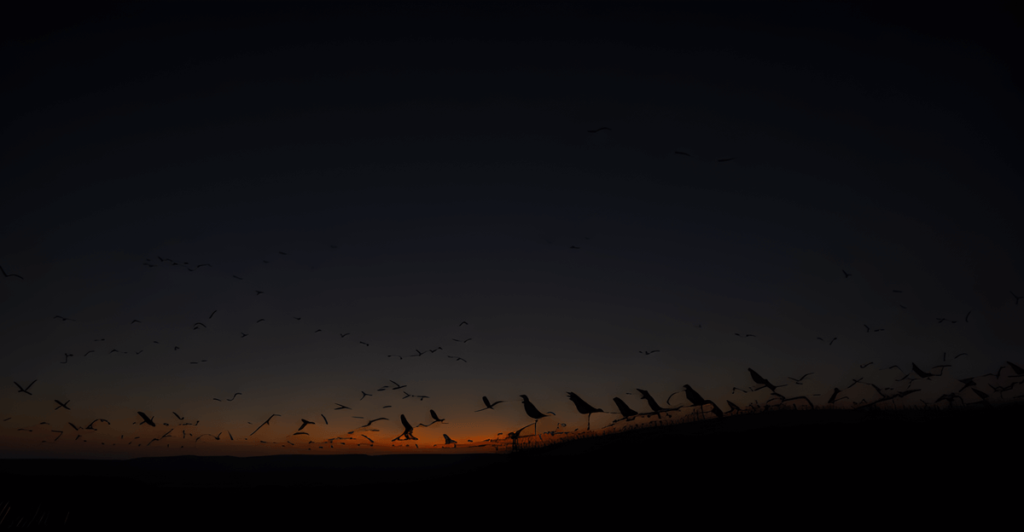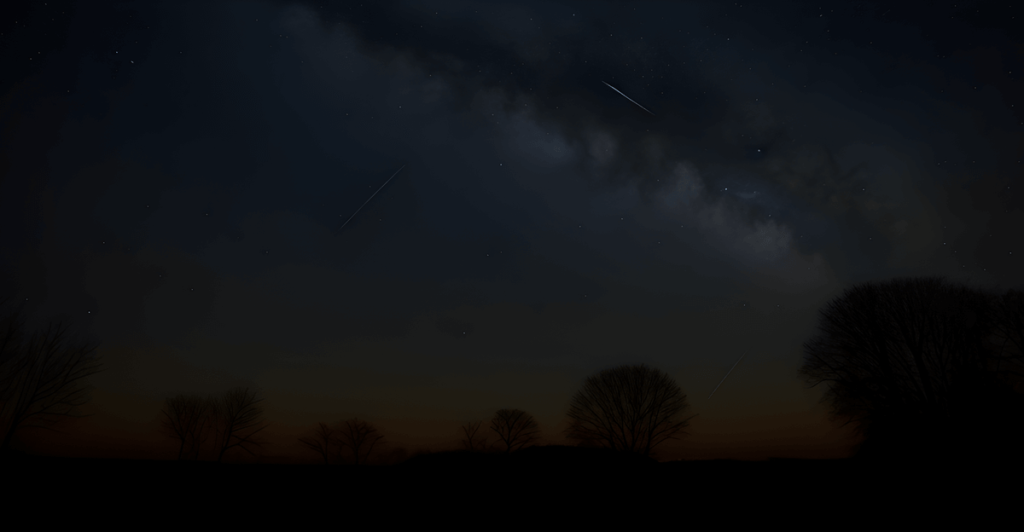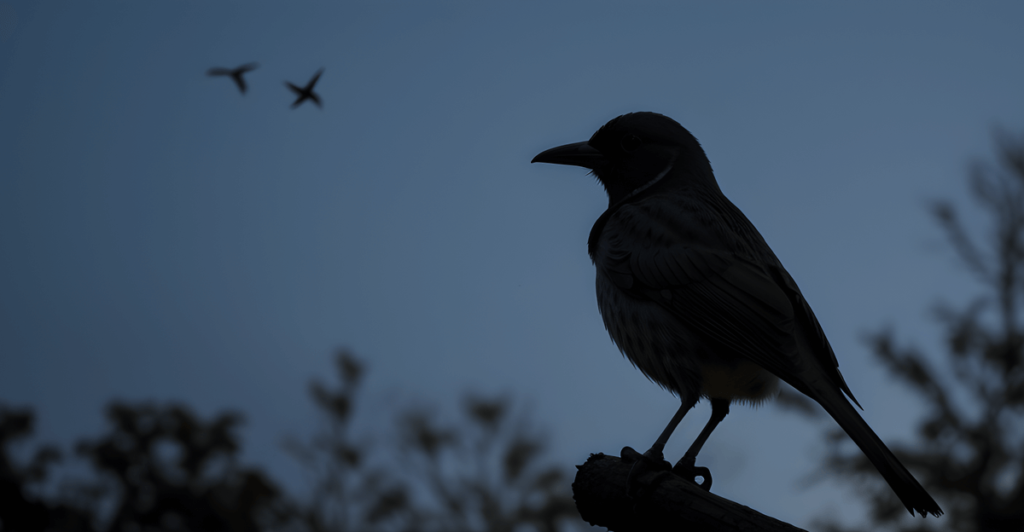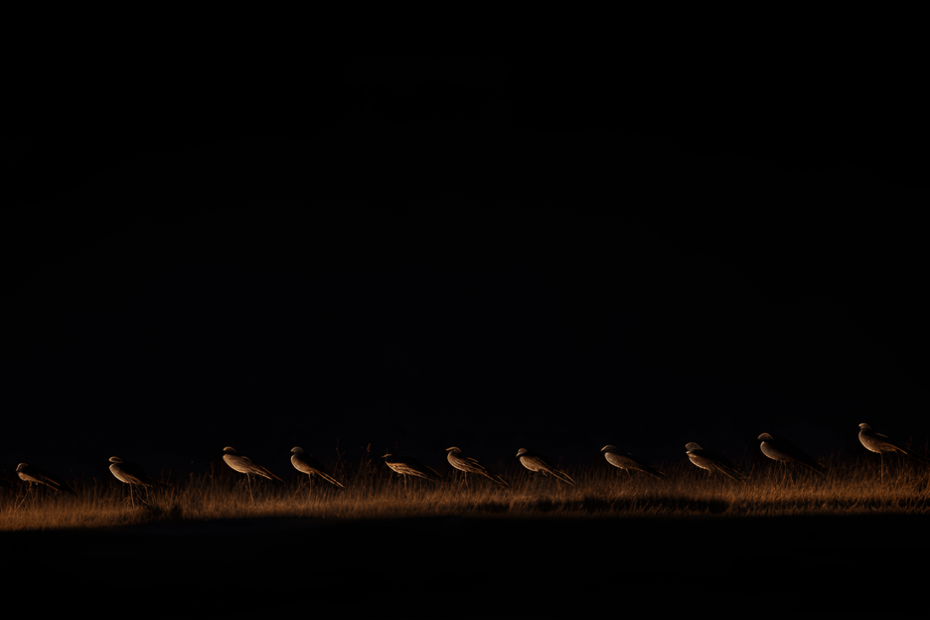Key Takeaways
- Nocturnal birds have exceptional night vision, allowing them to navigate and hunt in low-light environments.
- The anatomy of many birds’ eyes, including a high density of rod cells, contributes to their superior night vision capabilities.
- Diurnal and nocturnal birds have different adaptations for night vision, with nocturnal birds having larger eyes and more rod cells.
- Photoreceptors in many birds’ eyes play a crucial role in enabling them to see in the dark, enhancing their ability to detect light and movement.
- Parrots, known for their keen eyesight and unique eye structure, also possess the ability to see in dim conditions due to their photoreceptor distribution.
- Darkness and various environmental factors, including pigments, can significantly impact birds’ visual capabilities, influencing their ability to navigate and find prey during the night.
Introduction
I’ve always been intrigued by the mysterious ability of birds to navigate through the darkness. Have you ever wondered how humans manage to do that? Well, join me as we delve into this fascinating topic and uncover the secrets behind whether or not birds, with their pigments and cones, can see in the dark. We’ll explore their unique adaptations, from specialized cones and pigments to exceptional night vision capabilities, shedding light on their nocturnal activities and behaviors.
Birds have roamed our planet for millions of years, evolving alongside humans and adapting to various environments. Their visual prowess, particularly their bird eyesight, has played a crucial role in their survival throughout history, making them remarkable creatures worthy of our admiration and study. Let’s unravel the enigma surrounding avian night vision and bird eyesight, and gain a deeper understanding of these captivating creatures.
Exploring Nocturnal Birds and Their Enhanced Vision
Unique Adaptations
Nocturnal birds possess exceptional night vision that allows them to thrive in low-light conditions. These birds have evolved specialized features, such as large eyes with more rod cells for improved light sensitivity. They have a higher density of photoreceptors in their retinas, enhancing their ability to perceive even the faintest light.
Nocturnal birds like owls, nightjars, and nighthawks are well-known for their remarkable nocturnal vision. For instance, owls have forward-facing eyes that provide them with binocular vision, enabling precise depth perception during nighttime hunting. These adaptations equip these birds to navigate through dark environments efficiently and locate prey with accuracy.
Personal information: I find it fascinating how these nocturnal birds have developed unique visual capabilities to thrive in the darkness of night. It’s amazing to learn about the specific adaptations that enable them to hunt and survive in their habitat.

Hunting and Navigation
For many species of nocturnal birds, including owls and nighthawks, their vision is crucial for hunting. They rely on their exceptional night vision to detect movement and capture small vertebrates like rodents or insects under the cover of darkness. Moreover, these birds use their heightened visual acuity to navigate through dense foliage or open landscapes while avoiding potential predators.
The roosting spots chosen by nocturnal birds often reflect their reliance on sight for survival. By selecting concealed locations during daylight hours where they can rest undisturbed until dusk falls again, they minimize exposure to diurnal predators.
Personal information: As I delve into understanding how these fascinating creatures operate at night using enhanced vision abilities, it’s intriguing how much we can learn from nature’s adaptations for survival in different environments.
Can Birds See in the Dark?
The Importance of Large Eyes in Birds
Birds have large eyes relative to their head size, which is a crucial adaptation for their vision, especially in low-light conditions. This unique characteristic allows them to gather more light and enhances their ability to see in the dark. Compared to mammals, birds’ large eyes enable them to capture as much available light as possible, aiding in night vision.
The tapetum lucidum is a reflective layer behind the retina that exists in many animals’ eyes, including those of birds. This specialized structure plays a vital role in enhancing bird eyesight during low-light situations by reflecting light that passes through the retina back into it. As a result, this reflected light gets another chance to stimulate the photoreceptor cells on the retina, improving visual sensitivity at night.
Cornea and Lens Shape for Improved Night Vision
The shape of the cornea and lens in bird eyes also contributes significantly to their exceptional night vision capabilities. The cornea has a larger radius curvature than that of humans, allowing more light to enter the eye. Unlike human lenses that change shape for focusing on objects at different distances, bird lenses are more rigid but can alter position within the eye for focusing purposes.
Night Vision Differences in Diurnal vs Nocturnal Birds
Rod Cells vs Cone Cells
Nocturnal birds, such as owls and nightjars, have a higher density of rod cells in their retinas compared to diurnal birds. These rod cells are highly sensitive to light and enable these birds to see better in low-light conditions. On the other hand, diurnal birds, like eagles and robins, have a greater concentration of cone cells, which are responsible for color vision and detailed daylight sight.
The difference in the distribution of rod and cone cells between nocturnal and diurnal birds is crucial for understanding their ability to see in the dark. The increased number of rod cells allows nocturnal birds to detect even small amounts of light at night, enhancing their vision during hunting or navigating through dimly lit environments.
Pupil Size Variation
Another significant factor contributing to the night vision capabilities of nocturnal birds is their wider pupil size. This wider pupil allows more light to enter the eye, aiding them in capturing available ambient light during darkness. In contrast, diurnal birds typically have smaller pupils that are optimized for bright daylight conditions.
The adaptation of having a wider pupil enables nocturnal birds to maximize their visual sensitivity at night by gathering as much available light as possible. This unique feature gives them an edge when hunting for prey under low-light circumstances or avoiding obstacles while flying during nighttime hours.
I’ve always found it fascinating how different bird species have evolved distinct visual adaptations based on their active hours. It’s incredible how nature has equipped each type of bird with specialized tools for survival based on its lifestyle.

How Birds Navigate in Low-Light Environments
Landmarks and Sounds
Birds, especially nocturnal ones, have remarkable abilities to navigate in low-light environments. They use various techniques such as landmarks and sounds for orientation. For instance, some nocturnal birds rely on familiar landmarks like trees or buildings to guide their movements during the night. These features help them maintain a sense of direction even when visibility is significantly reduced.
Birds utilize sounds for navigation in the dark. They listen for specific calls from other birds or animals to determine their location and avoid potential obstacles. By using these auditory cues, they can create mental maps of their surroundings without relying solely on visual information.
In my experience observing owls at night, I’ve noticed how they use distinctive sounds from prey and other environmental cues to locate food sources and navigate through dense foliage.
Magnetic Fields and Echolocation
Another fascinating method that nocturnal birds employ for navigation in low-light environments is by sensing magnetic fields. Research suggests that certain species possess a specialized sensory system that allows them to detect Earth’s magnetic field lines. This extraordinary ability aids them in maintaining a consistent heading even when natural light is limited.
Moreover, some nocturnal birds rely on echolocation, emitting high-pitched sounds which bounce off objects in their environment and return as echoes. By interpreting these echoes, they can effectively map out their surroundings without depending heavily on vision alone.
I find it intriguing how certain bird species have evolved unique mechanisms such as echolocation or sensitivity to magnetic fields to thrive in low-light conditions where visual cues are scarce.
Celestial Navigation
Migratory nocturnal birds also utilize celestial bodies such as the moon and stars for navigation during long-distance flights at night. The patterns formed by these astronomical features serve as reliable guides for maintaining course over vast distances while minimizing the risk of getting disoriented amidst darkness.
For example: Swainson’s Thrushes are known to adjust their migratory routes based on variations in star patterns caused by seasonal changes – an impressive demonstration of how celestial navigation plays a crucial role in guiding avian journeys across continents under cover of darkness.
The Role of Photoreceptors in Bird Night Vision
Rod Cells: Detecting Low Levels of Light
Birds’ ability to see in the dark is supported by rod cells in their retinas. These specialized cells are responsible for detecting low levels of light, allowing birds to navigate and hunt during twilight hours or at night. When minimal light enters a bird’s eye, the rod cells kick into action, converting this light into electrical signals that can be interpreted by the brain.
In low-light conditions, such as at dusk or dawn, birds heavily rely on their rod cells to detect even the faintest sources of illumination. This heightened sensitivity enables them to spot prey and avoid obstacles while flying. For example, owls possess an exceptionally high density of rod cells in their retinas, granting them superior night vision capabilities compared to many other bird species.
Photoreceptors: Converting Light into Electrical Signals
The photoreceptors within a bird’s eye play a crucial role in transforming incoming light into electrical signals that can be processed by the brain. As these photoreceptors capture photons from dimly lit environments, they initiate a cascade of electrochemical reactions that ultimately result in nerve impulses being sent to the brain for interpretation.
This intricate process allows birds not only to perceive objects and movements during nighttime but also aids them in maintaining spatial awareness and avoiding potential threats when it’s dark outside. The efficient conversion of light into electrical signals ensures that birds can make split-second decisions based on visual input even under challenging lighting conditions.
Cone Cells: Enabling Color Vision During Daylight Hours
While many nocturnal birds primarily rely on their rod cells for night vision, some diurnal species benefit from having cone cells that enable color vision during daylight hours. These cone cells are sensitive to different wavelengths of light and allow certain birds to discern various colors with impressive clarity.
For instance, songbirds often exhibit vibrant plumage colors due to their well-developed cone cell systems. This enables them not only to appreciate colorful landscapes but also plays an essential role in courtship displays and mate selection processes among avian populations.
I find it fascinating how different types of photoreceptor cells work together seamlessly within a bird’s retina – each contributing uniquely towards enhancing its overall visual perception abilities across varying lighting conditions.
Parrots and Their Vision in Dim Conditions
Crepuscular Adaptation
Parrots, known for their vibrant plumage and remarkable mimicry skills, have also adapted to see well in dim conditions due to their crepuscular nature. This means they are most active during dawn and dusk when light levels are low. This adaptation allows them to thrive during times of the day when other animals may struggle with visibility.
This unique adaptation is essential for parrots as it enables them to search for food, communicate with others, and avoid predators during these low-light periods. Unlike humans who rely on bright lights for clear vision, parrots have evolved to make the most of the limited light available at these times.
Visual Acuity and Cone Cells
The visual acuity of parrots plays a crucial role in their ability to navigate dim conditions effectively. Their keen eyesight allows them to detect subtle movements at dusk or dawn, giving them an advantage when foraging or evading potential threats.
One key factor contributing to their exceptional vision in low light is the high number of cone cells present in their eyes. These cone cells enable color vision even in low-light environments, allowing parrots to distinguish different colors even when human eyes would struggle.
I’ve always found it fascinating how certain animals have developed specialized adaptations that allow them to thrive under specific conditions like low light levels. It’s amazing how nature equips each species with unique abilities tailored perfectly to its environment!
Impact of Darkness on Birds’ Visual Capabilities
Depth Perception and Visual Acuity
Can birds see in the dark? Darkness significantly affects the visual capabilities of both diurnal and nocturnal birds. In total darkness, depth perception and visual acuity are compromised for all bird species. This can make it challenging for them to accurately judge distances or identify objects.
In dim conditions, such as during twilight or in shaded areas, diurnal birds may experience reduced light levels that limit their color perception. As a result, they rely more on their motion detection abilities rather than color vision to navigate their surroundings. For example, parrots have excellent motion detection skills that help them compensate for decreased color perception in low-light environments.
Nocturnal birds like owls have evolved to thrive in low-light conditions by adapting their eyes to darkness. Their pupils dilate extensively to allow more light into their eyes, while specialized rod cells become active to enhance sensitivity in low-light settings.

Adaptation Mechanisms
The ability of birds to see in the dark is linked with the density of rod cells present in their retinas. Nocturnal birds possess a higher density of these cells compared to diurnal ones, giving them an advantage when navigating through dimly lit environments or complete darkness.
Some bird species exhibit unique adaptations that aid them in seeing well at night. For instance, barn owls have facial discs that direct sound toward their ears and aid them in locating prey even when visibility is extremely poor due to darkness.
I’ve found it fascinating how different bird species have adapted various mechanisms over time based on whether they are primarily active during daylight hours or at night.
Factors Influencing Night Vision in Birds
Environmental Factors
Birds’ ability to see in the dark is influenced by environmental factors such as moonlight and artificial lighting. Moonlight provides natural illumination, aiding birds with their night vision. On the other hand, excessive artificial lighting can disrupt their natural nocturnal behavior and affect their ability to navigate in the dark. This makes it crucial for bird habitats to maintain a balance between natural light sources like moonlight and minimizing human-made light pollution.
Artificial lighting from urban areas can confuse birds that rely on darkness for protection from predators or when hunting for food at night. For example, city lights might disorient migrating birds, leading to collisions with buildings or other obstacles. The impact of these environmental factors underscores the importance of preserving dark skies and reducing unnecessary nighttime lighting.
Predation Risk
The risk of predation heavily influences how nocturnal birds utilize their enhanced night vision capabilities. These birds have evolved heightened visual acuity during low-light conditions as a survival strategy against nocturnal predators or when they themselves are active hunters at night. Their exceptional night vision allows them to detect potential threats more effectively while navigating through dimly lit environments.
For instance, owls possess specialized retinas containing a high density of rod cells that enable them to see well in low light conditions. This adaptation enhances their ability to spot prey under cover of darkness while remaining vigilant against any lurking threats from larger predators.
Personal Experience: I once observed a barn owl effortlessly gliding through the darkness during an evening hike, showcasing its remarkable ability to hunt under minimal moonlight without being detected by its prey.
Habitat Characteristics
The characteristics of bird habitats play a pivotal role in shaping the night vision capabilities of different bird species. Habitats with dense vegetation may limit ambient light levels reaching ground-dwelling species, prompting them to develop superior night vision adaptations compared to open-field dwellers.
Moreover, migratory patterns also influence how certain bird species adapt their visual abilities based on varying environmental conditions encountered along their migration routes. Birds that migrate across regions with stark differences in day length may need versatile visual adaptations suited for both bright daylight and dim twilight hours.
Migratory Birds and Nighttime Navigation Challenges
Celestial Navigation
Many birds, including migratory species, rely on celestial cues such as stars to navigate during their nighttime flights. These celestial bodies provide a consistent reference point for birds traveling long distances at night. By using the stars’ positions relative to each other, birds can maintain their course and reach their destination even when it’s dark.
Migratory birds have evolved remarkable adaptations that allow them to interpret these celestial cues accurately. Their ability to use the stars for navigation is an extraordinary feat of natural engineering. It’s fascinating how these creatures can harness the power of the night sky for their journeys across continents.
I find it incredible that despite our dependence on technology for navigation, many bird species continue to rely on ancient methods involving celestial bodies like stars.
Magnetic Field Guidance
In addition to celestial navigation, migratory birds also utilize magnetic fields as a crucial aid in maintaining their course during nocturnal journeys. They possess specialized cells containing magnetite—a magnetic mineral—that helps them sense Earth’s magnetic field lines. This extraordinary ability enables them to orient themselves and stay on track even when flying through darkness.
The fact that some animals have this innate sense of direction based on Earth’s magnetic field is truly mind-boggling. It makes you wonder about the various ways different species perceive and interact with the world around them.
It’s intriguing how these tiny creatures possess such an intricate understanding of Earth’s magnetic field while we humans often struggle with directions even with advanced technology at our disposal.
Disorientation by Artificial Lights
Artificial lights pose a significant threat to migratory birds’ nighttime navigation abilities. Bright urban lights can disorient these avian travelers, leading them off course or causing fatal collisions with buildings or other structures. The presence of artificial light sources can disrupt the natural cues that guide these birds during migration, making it challenging for them to distinguish between artificial illumination and celestial objects like stars.
The impact of human activity on wildlife continues to be a pressing concern, especially regarding issues like light pollution affecting migrating bird populations worldwide.
Closing Thoughts
After delving into the fascinating world of nocturnal birds and their exceptional night vision, it’s clear that their ability to navigate and thrive in low-light environments is truly remarkable. The intricate adaptations in their eye anatomy and the role of specialized photoreceptors shed light on how these birds perceive the world after dark. Understanding these mechanisms not only deepens our appreciation for avian biology but also underscores the importance of preserving natural habitats for these remarkable creatures.
As we continue to uncover the mysteries of nocturnal bird vision, let’s also take a moment to reflect on our own impact on the environments they inhabit. Small actions, such as minimizing light pollution and supporting conservation efforts, can make a significant difference in safeguarding the habitats crucial for these extraordinary birds. By being mindful of our surroundings and advocating for responsible environmental practices, we can contribute to the preservation of these awe-inspiring species.
Frequently Asked Questions
Can nocturnal birds see in complete darkness?
No, nocturnal birds cannot see in complete darkness. However, they have specialized adaptations like a higher density of rod cells and a reflective layer behind the retina called the tapetum lucidum that enhance their vision in low-light conditions.
How do bird’s eyes help them to navigate at night?
Birds’ eyes are equipped with a high density of rod cells that enable them to detect even small amounts of light. The tapetum lucidum reflects light back through the retina, giving photoreceptors a second chance to pick up on any available light.
What role do photoreceptors play in bird night vision?
Photoreceptors, specifically rod cells, are crucial for bird night vision. These cells allow birds to perceive dim light levels and aid in detecting movement and shapes during low-light conditions.
Do migratory birds face challenges when navigating at night?
Yes, migratory birds encounter various challenges when navigating at night. They rely on celestial cues such as stars and moonlight for navigation but can also be affected by artificial lights from human settlements which can disrupt their natural navigation abilities.
How does darkness impact birds’ visual capabilities?
Darkness affects birds’ visual capabilities by limiting their ability to perceive colors and details. However, their unique eye anatomy and adaptations such as increased rod cell density allow them to effectively navigate and hunt in low-light environments.
